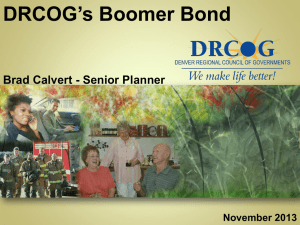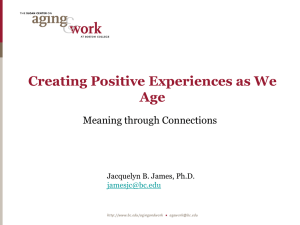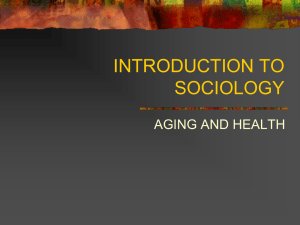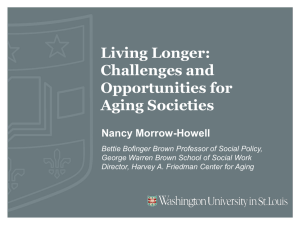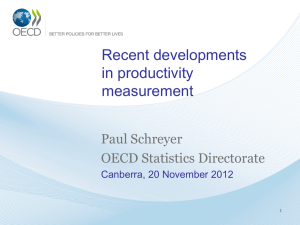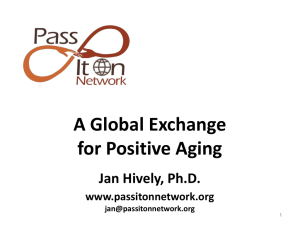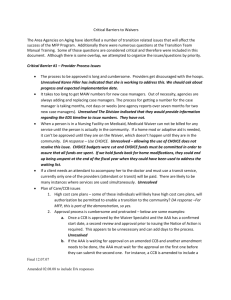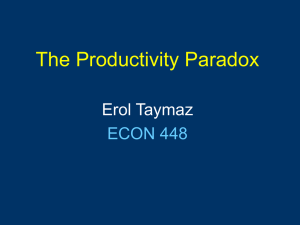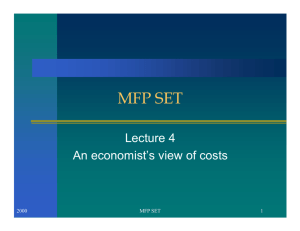BIP Funding Plans: Aging & Disability Perspective
advertisement
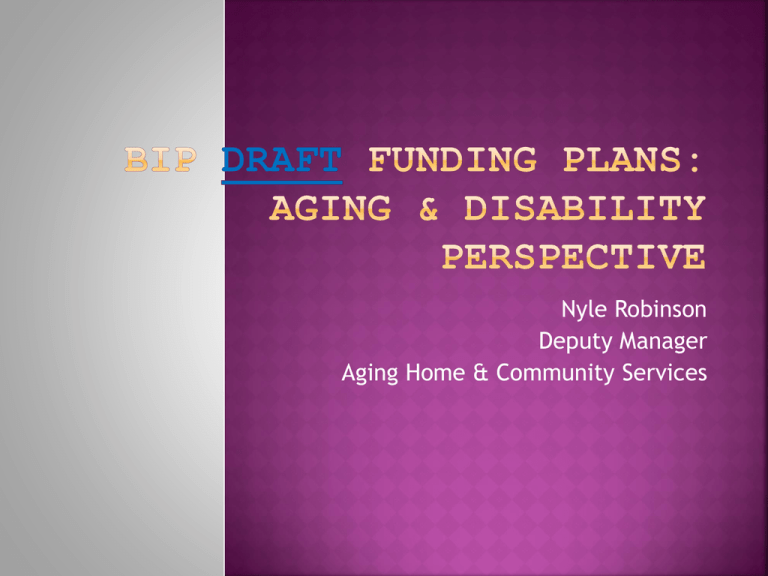
Nyle Robinson Deputy Manager Aging Home & Community Services NOTE: CMS has not yet formally approved the plan & funding must be approved by the legislature No Wrong Door Data System Design Data system development to link systems & facilitate appropriate referrals Under the Framework Will help move Framework forward with additional larger advantages to service delivery Core Assessment Tools/UAT Purchase, implementation & maintenance of both intake (Level 1) & assessment (Level 2) processes Integrate into a uniform data system Train people who will use both intake & assessment Advertising Plan Direct Marketing- brochures, info. materials, promotional letters Association Relationships (Service Providers, MCOs, Healthcare Providers, Discharge Planners, Advocates, Related Business, etc)- newsletters and presentations Event Marketing and Cross Promotions News and Feature Releases Web Coordination and Promos Radio/TV/Print Social Media Central Toll-Free Hotline Single entry line for LTC Services Majority of those seeking services will be 60 & up Aging Helpline anticipated to be central call center Calls may also go to other lines to speed response ADRC Branding & Strengthening (Aging) Aging & Disability Resource Center/Network Intended to include all disability groups/services Only Aging services are always included All 13 areas have been different, need some uniformity or at least standards Need to include the array of disability groups/services Intended to help services work better together Extend Options Counseling principles wider & deeper Front-End Analysis & Improvement (Aging) Avoiding placements more efficient & effective than reintegration later, prevention/early intervention Illinois’ higher use of institutional care starts at the front door Assumes we can increase deflection from placements & decrease the duration of many placements Funds to pilot different approaches to increase deflections Training for individuals who influence LTC placement decisions Home & Comm. Ombudsman Program (Aging) HB 1191 allowed for coverage of waiver participants subject to funding BIP funding will provide this, quality improvement Central Toll-Free Hotline (Aging) HSP Reintegration Expansion to Cover Persons 60 & Over (DRS) MFP recently expanded to cover Brain Injury & AIDS individuals of any age Also want to cover individuals 60 & over with <29 points BIP will improve supports, assure DRS does not have to restrict services to help these individuals Employment 1st (DDD/DRS) See Overarching Covered under DD, participation of DRS anticipated Expanded DMH MFP Coverage (DMH) Covered under MH Employment First Develop & implement a plan to review service options & enhance opportunities for individuals with DD to find & maintain meaningful employment in integrated settings at no less than minimum wage Phase 1 - Work with consultants & stakeholders to define types of opportunities to promote, identify provider qualifications, review current rate structure, establish benchmarks Phase 2 - obtain services to assist 200 individuals in accessing supported & competitive employment & establish procedural guide & other materials for use by providers throughout the system in supporting additional individuals in the future NOTE: Anticipate a companion project for DRS customers Capacity Expansion Expand DD waiver capacity to an additional 500 individuals on the waiting list in the community Tied to Ligas consent decree Expansion of Service & Support Teams Currently 2 teams provide technical assistance to providers in addressing challenging situations involving individuals with behavior & medical issues 2 additional teams will be added to meet the need for supports as the State rebalances toward reliance on community-based services * Expanded DMH MFP Coverage System currently has geographic gaps Funds will cover additional areas About half of SMI in NF are 60 & over Without a DMH MFP program in an area many individuals have been stuck PAS/RR System Interface with UAT Develop interface between PAR/RR Level 1 & Level 2 screening & the UAT tool system In-Home Recovery Support Enhancement to the MH Rule 132 Assertive Community Treatment (ACT) & Community Support Team (CST) services Primarily for Williams class members/not MFP eligible Goal is to prevent returns to facilities Peer A place where persons transitioned back to the community can engage peers who have done so successfully, offer support & hope Dual Support in Drop-in Centers Diagnosis Residential Treatment Special services necessary to facilitate transition individuals with both mental illness & substance abuse Orientation & support in Wellness Recovery Action Plan development, relapse prevention, access to self-help groups Enhanced Skills training & Assistance Assistance & skills training for individuals requiring a habilitation level of intervention to acquire basic skills for safe & successful independent apartment living Primarily for Williams class members/not MFP eligible Bi-directional Integrated health Care for Complex Needs Coordination of behavioral & primary health care & illness management/self management to ensure the needs of those with SMI or dual SMI/SA with complex medical needs are met Primarily for Williams class members/not MFP eligible
